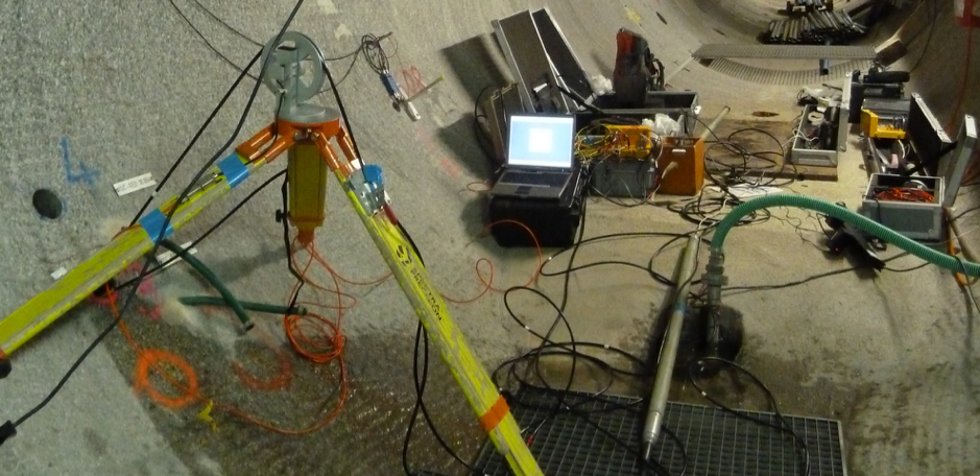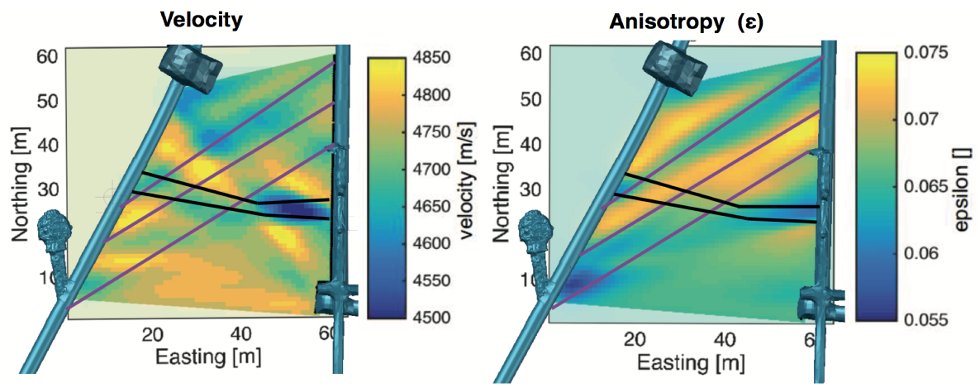Grimsel ISC Project
The utilization of geothermal energy for electricity production in Switzerland necessitates stimulation of the rock mass in order to develop a heat exchanger in the deep underground. The external pageGrimsel In-situ Stimulation and Circulation (ISC) projectcall_made aims at improving our understanding of geomechanical processes underpinning permeability creation during hydraulic stimulation and related induced seismicity as well as to evaluate the efficiency of the generated underground heat exchanger.
The Grimsel ISC project is a collaborative effort of several research groups within the Department of Earth Sciences, with the EEG group contributing geophysical characterization and monitoring technology.
Geophysical characterization
We combine anisotropic seismic traveltime inversion and reflection ground penetrating radar (GPR) imaging for improving the geological model of the test site.
Relevant literature:
Doetsch, J., Krietsch, H., Lajaunie, M., Schmelzbach, C., Maurer, H., & Amann, F. (2017). GPR imaging of shear zones in crystalline rock. In 2017 9th International Workshop on Advanced Ground Penetrating Radar (IWAGPR) (pp. 1–5). external pagehttps://doi.org/10.1109/IWAGPR.2017.7996074call_made
Ground Penetrating Radar (GPR) monitoring of salt tracers
Investigating preferential flow paths and fractures in rock formations is a crucial task in ongoing research for geothermal reservoir characterization. Monitoring of tracer tests at outflow points can help to identify flow paths, but the geometry of fractures and flow paths typically remains unclear. Using Ground Penetrating Radar (GPR) monitoring of salt tracers, we can vizualize the fracture geometry in 3D.
Relevant literature:
Giertzuch, P. L., Doetsch, J., Kittilä, A., Jalali, M., Schmelzbach, C., Maurer, H., & Shakas, A. (2018). Monitoring salt tracer transport in granite rock using ground penetrating radar reflection imaging. Ground Penetrating Radar (GPR), 14th International Conference on, Rapperswil.

Seismic monitoring of fluid pressure migration
Fluid pressure within the earth’s crust is a key driver for triggering both natural and human-induced earthquakes, aseismic deformation and volcanic eruptions. However, it is inherently difficult to measure directly and no proxy for remote monitoring has yet been established. Accordingly, the potential for real time monitoring and locating possible earthquake-driving fluid-pressure changes has not been explored for predictive seismic hazard assessment. We use data recorded during hydraulic stimulations to show the potential of seismic velocity monitoring for remotely estimating subsurface fluid pressure and stress evolution. The injection experiment was accompanied by a high level of monitoring, including pressure and deformation monitoring inside the rock volume. These in-situ measurements enable calibration of a relationship between pressure and seismic velocities so that the pressure evolution can be predicted throughout the volume – even in locations without sensors.


